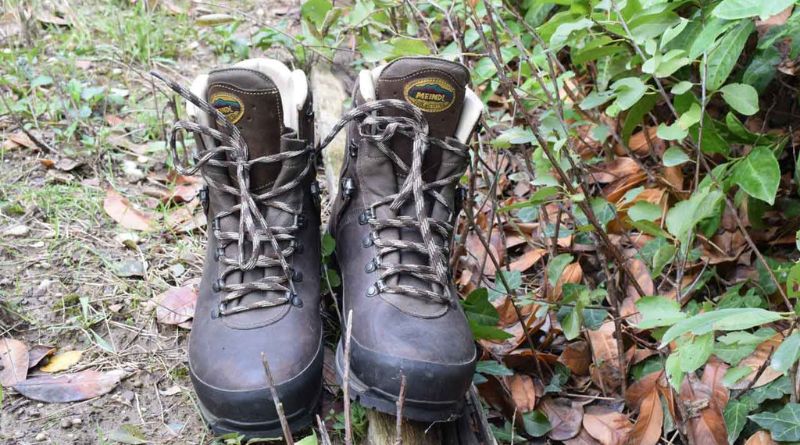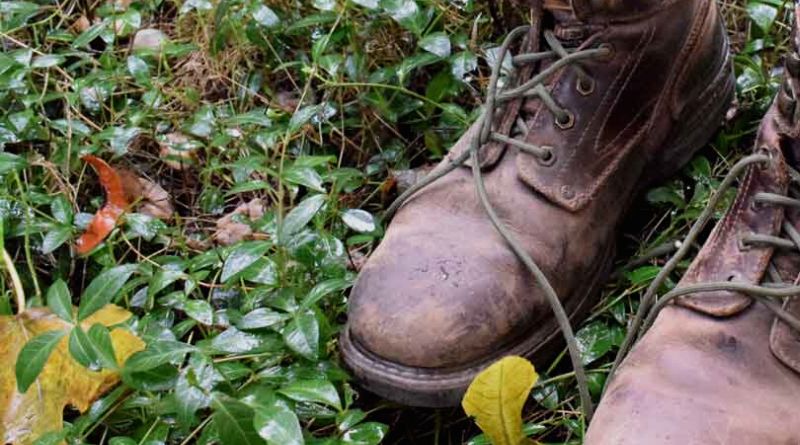Survival Shoes, Only A Fool Neglects Their Feet
Neglected by so many, footwear is one of the most important pieces of gear in a survivalists kit. In an emergency, chances are high that you will be on your feet for hours at a time. You may have to travel a long distance over unfamiliar terrain. Be it urban, jungle, forest, or desert terrain, a Good Pair of survival shoes are going to be essential. Uncomfortable shoes could end up with you having one foot in the grave.
But having the right pair of shoes will make you feel like you have the world at your feet.
Technically any pair of shoes can be survival shoes. It is wholly up to the wearer. In the not-so-distant past, people traversed great distances with barely any foot covering at all. Their feet were toughened by hours of walking on all types of terrain.
Most people in the days of yore were barefoot. The ones who did have some form of foot protection usually had some light form of protection, such as moccasins, sandals of some form, or other.
Native Americans wore moccasins, Indigenous Australians seldom wore foot protection, and the few who did wore simple sandals.
Modern Times And Footwear
For many folks nowadays, foot wear is more about style than function. People buy footwear based on brand name, appearance and comfort (usually prioritized in that order). Unless the shoes have a specific function like soccer shoes or running shoes. Most people do not care about practicality or durability (some seem to think that if a pair of shoes last 2 years that is durable). People are so used to wearing shoes that their feet would be sore and blistered if they attempted to walk through the woods barefoot. With that in mind, let us look at some criteria for survival shoes.
Durability
Common sense dictates that in a survival situation, you will want a pair of shoes that are durable. After all, it’s not like you can go to the nearest shoe shop to pick up another pair if yours fail while you are bugging out.
Leather Vs Synthetic
Even after all the advances in technology, modern materials still can’t beat good old-fashioned leather when it comes to footwear material. Well looked after leather shoes will outlast any other material currently on the market.
Synthetic Materials do have advantages. They are generally lighter and cheaper if you are on a tight budget.
To balance price and weight, many shoe manufacturers now have a blend of the two.
Protection
Survival boots are going to need to protect the wearer from the environment they are walking over. This means that unlike regular shoes they will need to be sturdier.
Waterproofing
Survival boots need to have a decent level of waterproofing while being breathable as well. Walking in soaked boots is unpleasant at the best of times. And trench foot is terrible at any time (trench foot is the result of having wet feet in shoes or boots for extended periods of time).
Traction
One of the most important features of any shoe. Survival shoes need to have exceptional traction. Think car tires, would you prefer your tires to be slippery or grip the road.
Ankle Protection
If the terrain traversed is hilly, and uneven then high topped boots are highly recommended. High-topped boots add an extra level of support to the ankle.

Comfort
Finding a comfortable pair of shoes is essential, getting blisters and sores will only slow you down. And of course, there is the risk of infection. Make sure that the survival boots are broken in and comfortable enough for day-long hikes. Never rely on brand new untested boots.

Laces Vs Zippers, Buckles, or Velcro
Laces are the easiest to repair if they fail for some reason. But in very cold environments they can be difficult to tie and untie. (ever tried to tie frozen shoelaces while wearing gloves in a snow storm?).
Zippers are great, but if they break they are a goner, they aren’t waterproof and if they get dirt or grit in them they are a pain to zip up.
Buckles like zippers are difficult to replace or repair. And I find them a little uncomfortable.
Velcro… just forget it, not reliable enough for a pair of survival shoes/boots.
End of the day, laces are the best choice.
Pro Tip: replace shoelaces with paracord, paracord lasts longer, is more durable and in an emergency can be used for a vast variety of things.
Weight
Weight may be a consideration, some prefer lighter shoes, others heavier and some do not care. Be aware that depending on the material and shoe construction, there can be a substantial difference in the weight of the shoes. The Rule of thumb is the sturdier more durable the shoes are, the more they weigh. But if they are too heavy and tire the wearer out, that defeats the purpose of the shoes, which is to get the person where they want to go.
Environment/Terrain
The type of survival shoe depends heavily on the environment, buying a great pair of insulated leather hiking boots to cross the desert may not be the best idea. And getting a pair of uninsulated safety shoes for a trip to a tundra would pretty much guarantee frostbite and the loss of a few toes.
What Type of Survival Shoe Should I Get?
As mentioned above, any comfortable pair of shoes can be used as survival shoes. But in general, they can be divided into 3 categories.
Mountaineering Boots
Great for rocky terrain, snowy areas, and heavy use, usually made of full grain leather these are heavy-duty use boots. Notice the word heavy was used a couple of times in regards to these boots. Well, they weigh quite a bit more than the other two options. And they usually cost a bit more too.
Be aware that most mountaineering boots do NOT do well in urban environments. They usually have an inner shank for added support so they tend to be a little stiff. And they tend to be a little slippery on smooth cement surfaces. For surviving in the outdoors. These are the recommended type of boots.
Military Boots
Made to take a beating, usually a mix of natural (leather) and synthetic materials. These types of boots are versatile, lightweight (in comparison to mountaineering boots), very breathable, and designed for both outdoor and urban wear. Just be aware they are not always waterproof, and in snowy weather, your tootsies are gonna get cold. So if this is your preferred choice and cold weather is expected, buy one size larger and pack extra wool socks. For a mix of terrains, outdoor and urban, choose military boots
Hiking Boots
These boots fall right in the middle of the two types listed above. They are not as heavy as mountaineering boots or as light as military boots.
They come in the full leather variety, synthetic, or a mix of both depending on the model. Some are fully waterproof, others are not. The main advantage is comfort. They are the most comfortable choice of the three. The biggest downfall is that they are usually the least durable. Designed for comfort, breathability, and speed.
The Best Survival Shoes
Here are some shoes I have personally tested and worked quite well.
Timberland Mt.Maddsens Hiking Boots
These lasted for years, for light hiking and even running in the outdoors, they were great. If I am not mistaken, I had them for about 5 years before I wore them out.
Meindl Island Active MFS
Hiking over rough terrain and in snowy conditions, they are a solid pair of boots, be aware the Vibram soles are slippery on wet or icy cement when the shoes are new. The soles need to be … roughed up a little. After which they are ok. Be Aware I got these in Germany.
Danner USMC Rat ST GTX 8″ boots
These were great, but finding a store that stocks them is a pain.
Lightweight, durable, and comfortable. Expensive, make sure to try them on before buying, fit is an issue.
Safety Shoes For Survival
Another less popular option is safety shoes. Steel toed and steel shank, the problem with these shoes are they are very stiff. So not that comfortable and unless you have strong feet and good balance, they are a little tricky on uneven terrain. I loved my pair of Cats Safety Shoes. If your environment is predominantly Urban. Safety shoes are definitely an option.
Survival shoes are an essential part of a survivalists kit, along with Survival Clothes and a well stocked Bug-Out Bag.